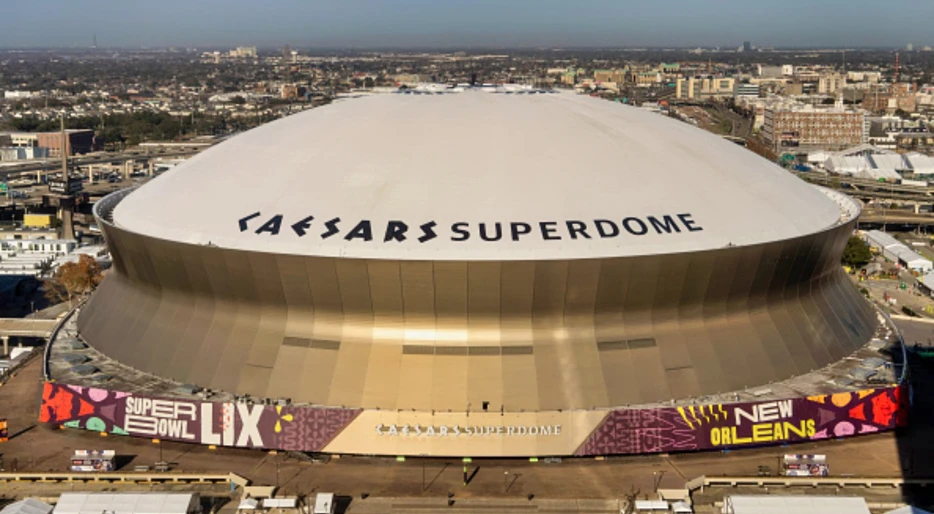
Super Bowl 2025 is back in New Orleans, and the newly renovated Caesars Superdome is set to take center stage. After hosting the big game seven times before, the iconic stadium has undergone a $560 million transformation- not just for aesthetics but to generate massive revenue. Modern stadiums are less about cramming in fans and more about premium experiences that drive higher profits.
From luxury suites to self-service concessions, here’s how the Superdome is designed to maximize every dollar.
Unlike older stadiums that prioritize capacity, modern venues focus on comfort and high-end amenities. The Superdome’s latest redesign removed about 1,000 general admission seats to make way for premium lounges and VIP suites, which can cost anywhere from $10,000 to $50,000 per game. Companies lease these suites for years, while individual events offer rentals for deep-pocketed fans. Even club seating runs between $2,000 and $4,000 per season, proving that the real money isn’t in filling every seat- it’s in catering to those willing to pay for exclusivity.
Crowd flow is essential in games like the Super Bowl to keep fans happy and spending. To reduce congestion among 70,000 attendees, designers added larger entrances and replaced winding ramps with faster escalators and elevators. They also removed bulky staircases, freeing up space for more stands. Exclusive entry points ensure that premium ticket holders bypass the general crowd, reinforcing the divide between regular and high-end experiences.
Nobody likes waiting in long lines for food and drinks, and the Superdome has found a way to speed up transactions while selling more. Designers replaced traditional belly-up concession stands with grab-and-go markets, allowing fans to grab items at self-service counters quickly. This not only reduces wait times but also allows for more efficient use of space.
Alcohol sales are another major revenue driver. Recognizing this, designers installed a 40-yard-long bar with multiple order points every five feet. This prevents the typical long, slow-moving line, keeping fans moving while ensuring constant sales.
Every aspect of the stadium’s operations is optimized in real time. Managers use digital dashboards to monitor sales patterns, adjusting stock and menus accordingly to meet demand. If a particular item sells quickly, inventory is replenished before fans even notice shortages. This level of precision prevents waste while maximizing profitability.
Also Read: Is Mobile Usage In NFL Stadiums Increasing?
The Superdome isn’t just for football or the Super Bowl. A hydraulic platform beneath the seats adjusts the layout based on the event. By shifting seating configurations with ease, the venue can seamlessly transition from an NFL game to a concert or convention, ensuring the stadium stays booked year-round.
While these upgrades make the Superdome a revenue powerhouse, they come at a cost- especially for the average fan. In 1991, a family of four could attend an NFL...